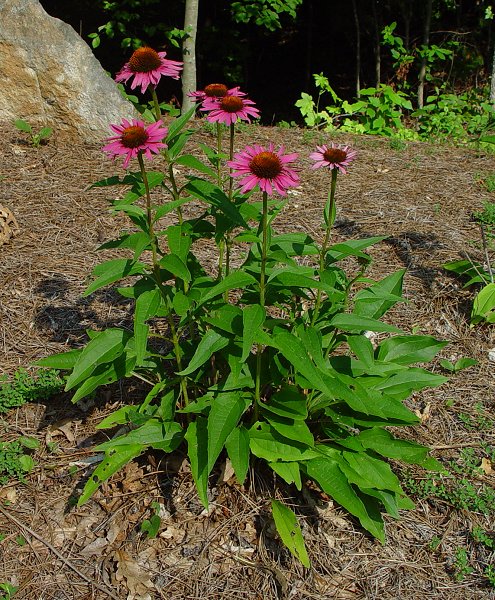Echinacea purpurea (L.) Moench
Purple Coneflower

Native
CC = 5
CW = 5
MOC = 60
© DETenaglia
Echinacea purpurea (L.) MoenchPurple Coneflower | |
 |
Native CC = 5 CW = 5 MOC = 60 |
© DETenaglia |
|
Family - Asteraceae/Heliantheae Stems - To -2m tall, herbaceous, hirsute to sparsely pubescent, branching.
Leaves - Alternate, petiolate, 1.5-5 times longer than broad, to +10cm broad, lanceolate to ovate, serrate, very sparsely pubescent to pubescent, reduced towards apex of stem and becoming sessile. Base of blades abrupt to the petiole. Inflorescence - Single flower head terminating stem. Involucre - Imbricate. Phyllaries lanceolate to linear-lanceolate, recurving and merging with receptacle chaff.
Ray flowers - Ligules pinkish-purple, to 8cm long, spreading at first and then slightly reflexed, slightly notched (toothed) at apex. Disk flowers - Corolla tubular, to 6mm long, deep red to purplish-brown. Achenes to -5mm long. Pappus a small toothed crown. Receptacle conic, with chaff equaling or longer than disk florets.
Flowering - May - October. Habitat - Open woodland, low woods. Origin - Native to U.S. Other info. - The genus is actually named for a small, spiny, omnivorous mammal of Europe, Asia and Africa called the "Hedgehog" (Erinaceus sp.). The spines of the hedgehog are reminiscent of the receptacle chaff of the plants. Photographs taken in Brown Summit, NC., 7-10-02. |